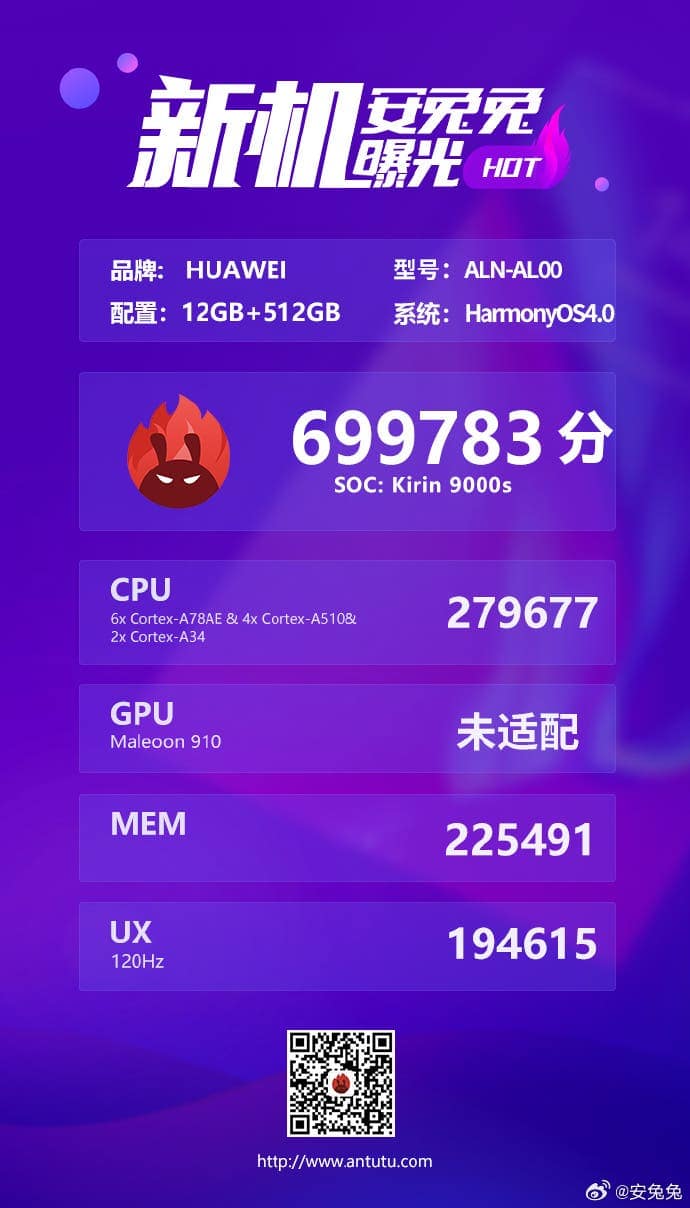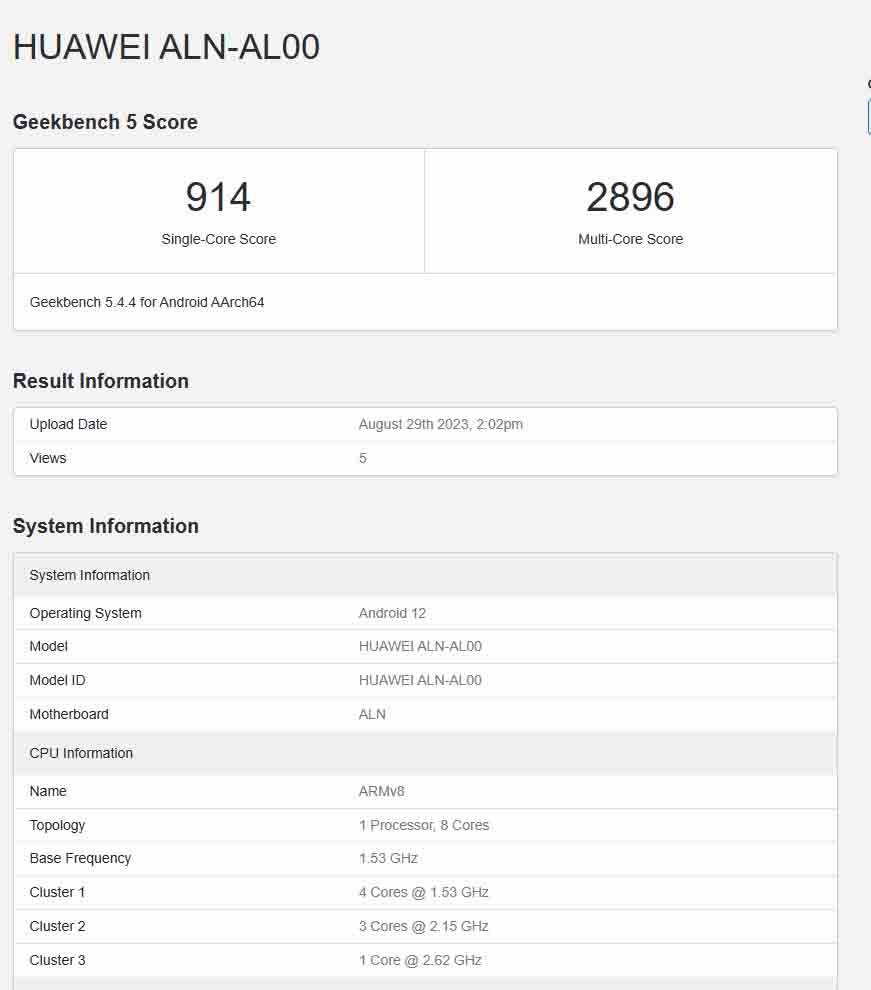Huawei unveiled the Mate 60 Pro, its cutting-edge smartphone, in an unexpected noon launch. While the CPU type was kept a secret at the time of the announcement, the phone’s amazing score of 699,783 points on the popular testing website AnTuTu was made public. Apart from this, it has managed to appear on GeekBench as well.

Huawei Mate 60 Pro Benchmark Comparison Scores
It turns out that this Huawei handset comes with the Kirin 9000s CPU, which has a distinctive 12-core architecture, according to AnTuTu. Two A34 cores, six specialized A78AE cores, and four A510 cores are distributed among the architecture’s 2+6+4 segments. The GPU model is Maleoon, while the CPU has a top clock of 2.62GHz. The phone is packed with 12GB of RAM, and 512GB of storage, and runs on HarmonyOS 4.0.
This architecture looks to be novel. The original specs have a chance for formal modifications because they are based on early hardware data. Although the device’s CPU exceeds the Snapdragon 888, its performance is inferior to that of the Snapdragon 8 Gen 1 and Snapdragon 8+ Gen 1.
Gizchina News of the week
A recent discovery of the gadget on Geekbench is probably the result of a testing error. The Mate 60 Pro’s potential is still enticing even though the early Geekbench 5.4.4 data shows mediocre results. The Cortex-A78 (AE?)+? +A510+Maleoon 910 GPU combo runs at 12.62GHz, 32.15GHz, and 41.53GHz on an 8-core processor, according to Geekbench.

Anyway, the Mate 60 Pro had a strong performance on Geekbench. The multi-core score peaked at 2,896 points, while the single-core score was 914 points. These findings put the phone in comparison to other well-known designs including the Samsung Galaxy S23 Ultra, Huawei Mate 50 Pro, and more.
Besides this, with the addition of satellite calling features, the Huawei Mate 60 Pro allows users to place and receive calls without relying on conventional terrestrial networks. The feature also makes it easy to alter satellite communications and create trajectory maps using a variety of location data.





